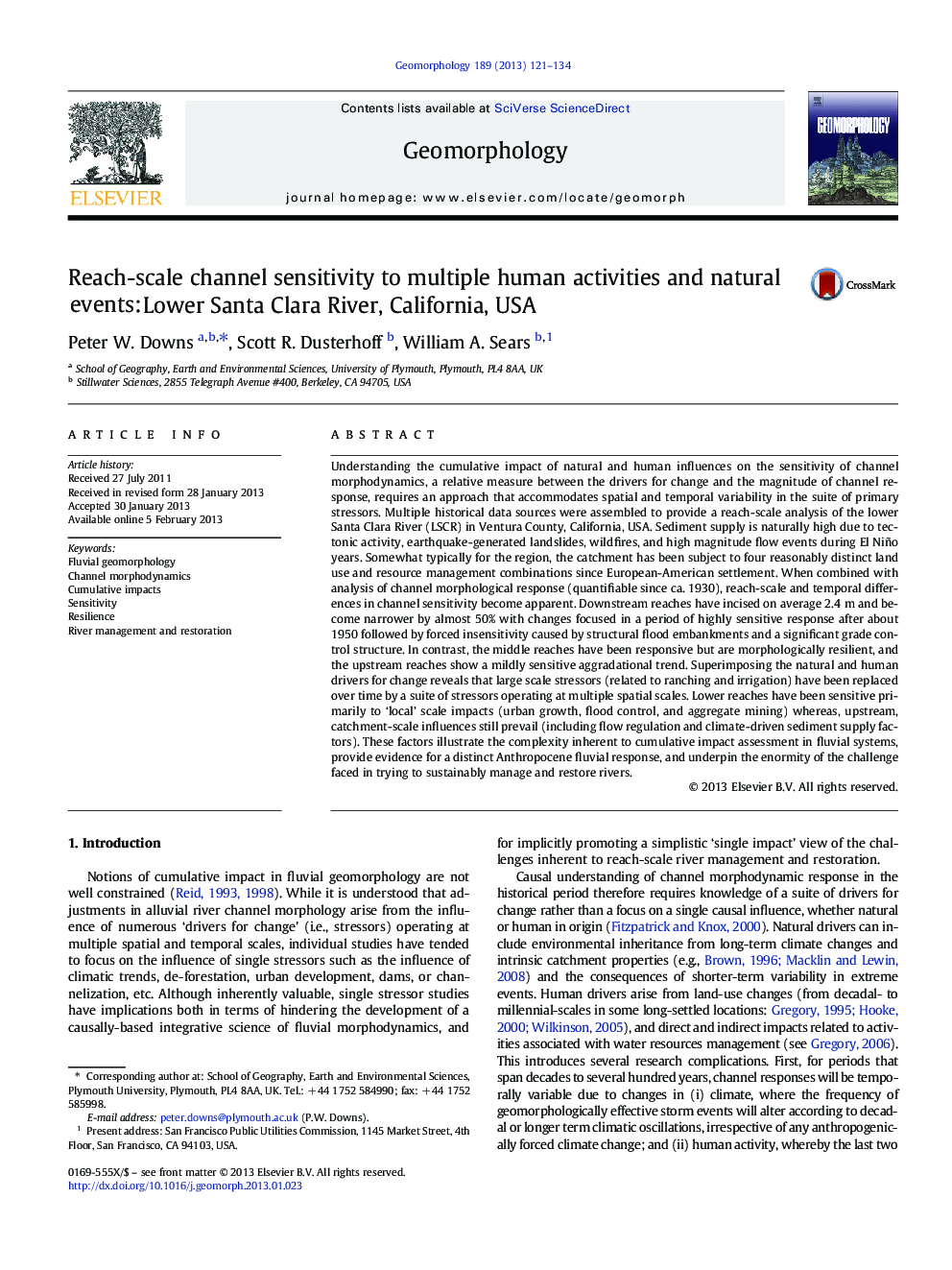| کد مقاله | کد نشریه | سال انتشار | مقاله انگلیسی | نسخه تمام متن |
|---|---|---|---|---|
| 4684917 | 1635460 | 2013 | 14 صفحه PDF | دانلود رایگان |
Understanding the cumulative impact of natural and human influences on the sensitivity of channel morphodynamics, a relative measure between the drivers for change and the magnitude of channel response, requires an approach that accommodates spatial and temporal variability in the suite of primary stressors. Multiple historical data sources were assembled to provide a reach-scale analysis of the lower Santa Clara River (LSCR) in Ventura County, California, USA. Sediment supply is naturally high due to tectonic activity, earthquake-generated landslides, wildfires, and high magnitude flow events during El Niño years. Somewhat typically for the region, the catchment has been subject to four reasonably distinct land use and resource management combinations since European-American settlement. When combined with analysis of channel morphological response (quantifiable since ca. 1930), reach-scale and temporal differences in channel sensitivity become apparent. Downstream reaches have incised on average 2.4 m and become narrower by almost 50% with changes focused in a period of highly sensitive response after about 1950 followed by forced insensitivity caused by structural flood embankments and a significant grade control structure. In contrast, the middle reaches have been responsive but are morphologically resilient, and the upstream reaches show a mildly sensitive aggradational trend. Superimposing the natural and human drivers for change reveals that large scale stressors (related to ranching and irrigation) have been replaced over time by a suite of stressors operating at multiple spatial scales. Lower reaches have been sensitive primarily to ‘local’ scale impacts (urban growth, flood control, and aggregate mining) whereas, upstream, catchment-scale influences still prevail (including flow regulation and climate-driven sediment supply factors). These factors illustrate the complexity inherent to cumulative impact assessment in fluvial systems, provide evidence for a distinct Anthropocene fluvial response, and underpin the enormity of the challenge faced in trying to sustainably manage and restore rivers.
Journal: Geomorphology - Volume 189, 1 May 2013, Pages 121–134
